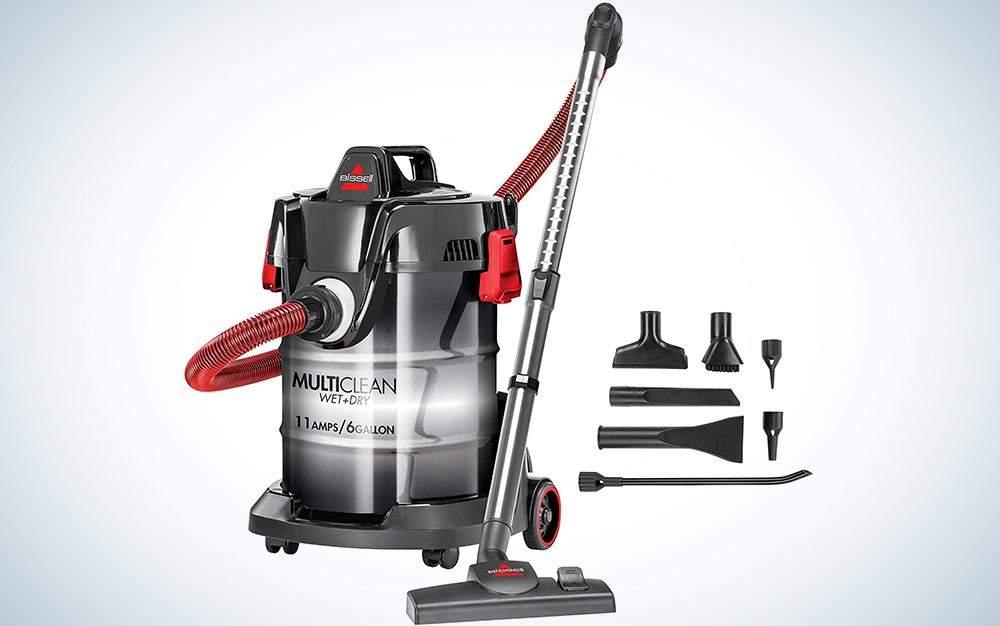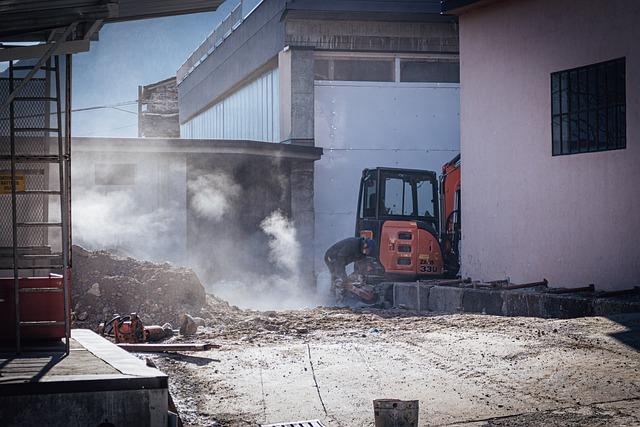
Shop vacuum, also called shop vac, is an advanced vacuum cleaner that is not only able to pick up solid waste like the regular vacuum cleaner but can also be used to suck up liquid content.
Apart from drying off wet surfaces, shop vacuums can be used to drain small bodies of water like pools and aquariums. The regular vacuum cleaners can pick up debris and dust particles from the floor, but most times, it's rendered helpless when it comes to cleaning liquid content off the floor.
This particular inability of the regular vacuum cleaner birthed the invention of the shop vac.
The shop vac was originally made to be used in construction sites for sucking up construction wastes like wood shavings and chunks of unused materials.
With time, manufacturers began to make shop vacuums that are suitable for domestic uses. They’re also called wet-dry vacuums because they can be used to clean wet surfaces and remove solid wastes.
Features of a Shop Vac
A mastery of the components and uses of the components of a shop vac is important to use it efficiently. Listed below are some of the components and their functions.

Image credit: garagetooladvisor.com
Tank
This is where the water you suck up is been deposited. Depending on the size of the vac, the tank can have up to 15-gallon water holding capacity. When not in use, the tank is meant to be dry, clean, and empty.
Blowing port
It provides an attachment where the blower band can be fixed.
Handle
This is a safe holding component of a shop vac. Some shop vacuums have an on or off switch attached to their handles for effective and swift control of the machine.
Tool storage
This is a removable toolbox attached to the shop vac. It contains some pieces of equipment and tools that the manufacturer believes will be necessary for repairs and adjustment of the machine parts.
Power cord
It is the source of electricity supply. It's usually designed to avoid being soaked up with water.
Hose
Here’s the suction pipe that’s easily bendable and elongated to varying lengths.
Filter
This component traps the dust you’re cleaning. When cleaning debris mixed in water, you can use a foam sleeve as your filter.
How to Suck Up Water with Your Shop Vac
Outlined below are some steps or rules to follow to achieve maximum results.
Make a Suitable Choice of Machine
Not all shop vacuums will be suitable for your intended use. Some are meant to be used for heavy cleanings like in construction sites while others are designed to be used only at home. Even among the domestic variants, some have large storage tanks, big wheels (that make moving up and down the stairs easier), and longer hoses.
If the purpose of the vac is to drain a large pool of water, the tank should be of a reasonable capacity capable of containing up to 20 gallons of water.
You may also want to check the Horsepower (power capacity) of the device; some require high energy to operate. If you’re using home-generated electricity, you may consider using one that doesn't consume much power.
Some are much easier to grip, operate, and maintain. They require little technical know-how, which might be just what you need.
Set-up Your Machine
If you newly purchased your shop vac, it is proper you go through the user guide to set up the machine properly.

Image credit: popsci.com
Different manufacturers include unique functions and features to their brands to make them stand out. The potentials of these features can be maximized when used as prescribed in the manual. You may seek more clarification if not clear about any feature, or make a complaint to the manufacturer if you notice any abnormality.
The shop vac can be quite dangerous if faulty or not fixed properly. Be sure to always switch off the power when setting up the machine for use, as any mishap could lead to electrocution.
To be on the safer side, employ the services of a professional to set it up and check for any malfunctions in its component. Do some mock cleaning to ascertain its workability before carrying out the actual cleaning.
Ensure that the tank is empty and rid of solid materials from previous usages. Even though it is a wet-dry vacuum cleaner and can be used for both wet and dry surfaces, it should not be mixed purposely. The filter should be removed while vacuuming water; water can damage the filter.
The filter can be replaced when it's time to suck up solid wastes. And when doing so, it should be placed properly to avoid dust from blowing out while cleaning.
Plug into a Ground Fault Circuit Interrupter (GFCI) Outlet
When vacuuming water, the water may get in contact with a bare wire, and this can pose a danger. You should use a GFCI outlet for your shop vac.
GFCI outlets have circuit breakers that cut off electricity supply when they notice fluctuations or sudden changes in the flow of electric current. In this case, when a person is getting electrocuted, the GFCI immediately senses this and cuts off the power supply. It is built to respond very quickly.
However, a disadvantage of the GFCI outlet is that if any fluctuation power is sensed and the circuit breaker is broken, the entire branch circuit gets disconnected.
This will require calling an expert to fix, which can be financially tasking. You may decide to still use a GFCI outlet and bear the cost of unnecessary repairs or simply use the regular power outlet.
Begin Cleaning
After you’re done setting up your shop vac, it's time to begin cleaning. Use the right attachments for cleaning wet surfaces; each attachment has a unique purpose. Attachments for the wet floor are laid flat on the ground while those for large chunks of debris are usually big (depending on the manufacturer's design).
Pull the hose along with you with the attachment, which is placed over the pool of water while the machine works. Work gently to ensure that the water is properly drained.
As you move around, be sure to shield your feet with safety boots to avoid being electrocuted if anything goes wrong. Tie up long hairs and loose clothes, and remove your fingers from any moving and open part of the machine.
Be careful to avoid flammable and combustible liquids. Electrical sparks from the machine may ignite a fire outbreak. As you suck up water, watch out for indications signaling a filled tank (which is often a slight increase in the sound of the machine).
Detach the tank, dispose of the water, and fix it back on its motor. Switch off the machine and unplug from the power source before emptying the tank or changing the filter to prevent an accident.
When the machine is not in use, wrap the hose around it (or in its designated place). Also, the power cable should not be left lying on the wet floor.
Observe Good Maintenance Culture
Just like other machines, shop vacuums require utmost care and maintenance after every usage and regularly when it's not in use for a long time. There are few tips to observe:

Image credit: hip2save.com
- Clean the tank
After using the shop vac, wash the tank with soap and warm water. Get rid of oily and greasy stains that may have been sucked up with the water. If stains are left, they may become permanent and make your vac look old and unappealing. The tank should be detached, cleaned, and dried before being replaced on the motor.
- Do a thorough clean-up
Use a wet soapy towel to clean the body of your equipment. Clean off stubborn stains before they become permanent. As you clean, be careful not to spill water into the electrical part of the machine.
- Repackage the machine

Image credit: pennlive.com
Roll up the power cord, hose, and put them in their right positions if provisions are made for them. The attachments and any other removable parts should be kept back in the carton or any place you designate for it. Thereafter, keep the machine in a safe place.
- Fix loosening parts
It's normal for machine parts to get loose when used continuously. After using your vac, check if its components are still firm and intact. Some shop vacuums come with a toolbox containing tools that will be necessary for fixing loosening parts. It's an indication that even the manufacturer expects you to regularly tighten the machine parts.
- Call a repairer when the machine gets faulty
If you notice any fault or unusual noise, it's best to invite an expert. Always avoid the temptation to open the electrical components of the machine to fix it yourself.
Takeaway
A shop vacuum is an easy-to-operate and time-saving machine that is indispensable in any home. However, care must be taken to keep it out of the reach of children. And if they must use it, it should be under close supervision.






Leave a comment
This site is protected by hCaptcha and the hCaptcha Privacy Policy and Terms of Service apply.